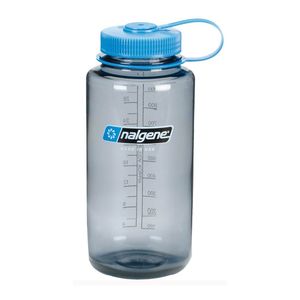Specific volume

The specific volume of a substance (Failed to parse (syntax error): {\displaystyle ν} ) is defined as the ratio of the substance's volume () to its mass (). Specific volume is measured in units of cubic meters per kilogram (m3/kg) or liters per kilogram (L/kg).[1]

For example, the specific volume of water is 1.0 L/kg. This means that 1 kg of water takes up 1 liter of space. A liter of water can fit into a standard water bottle, such as a Nalgene. In contrast, the specific volume of air is 820 L/kg. This means that 1 kg of air takes up 820 liters of space.[2] Since 1 liter of air can fit into a water bottle, we would need 820 water bottles of air to equal 1 kilogram. If you lined up 820 water bottles, it would be approximately of the length of a soccer field. This is to say that the specific volume can be drastically different for various substances such as water and air.
Because specific volume is per unit mass, its value does not depend on sample size. Thus, it is an intensive property of matter.[3] The formula for specific volume is shown below:
where:
- Failed to parse (syntax error): {\displaystyle ν} is the specific volume
- is the volume of substance (in cubic meters)
- is the mass of the substance (in kilograms)
This equation applies to all states of matter; solid, liquid, and gas.
Specific volume can also be thought of as the reciprocal of density (Failed to parse (syntax error): {\displaystyle ρ} ):[2]
This equation mainly applies to liquids and gases. Since specific volume and density are inverses of each other, a substance with a high density will have a low specific volume. For example, a substance with a density of 500 kg/m3 will have a specific volume of 0.002 m3/kg.[4]
When calculating the specific volume of a gas, the ideal gas law can be applied. Since and , then:
where:
- Failed to parse (syntax error): {\displaystyle ν} is the specific volume
- is the ideal gas constant
- is the temperature
- is the pressure, and
- is the molar mass
Further Reading
- Volume
- Mass
- Density
- Ideal gas law
- Or explore a random page
References
- ↑ "Specific Volume", NASA. [Online]. Available: https://www.grc.nasa.gov/www/k-12/VirtualAero/BottleRocket/airplane/specvol.html. [Accessed: 13- May- 2021].
- ↑ 2.0 2.1 "Water - Specific Volume", The Engineering Toolbox. [Online]. Available: https://www.engineeringtoolbox.com/water-specific-volume-weight-d_661.html. [Accessed: 13- May- 2021].
- ↑ "Specific Volume Definition and Examples", Science Notes and Projects, 2021. [Online]. Available: https://sciencenotes.org/specific-volume-definition-and-examples/. [Accessed: 05- May- 2021].
- ↑ Jeff Haby, "What is specific volume?", The Weather Prediction. [Online]. Available: https://www.theweatherprediction.com/habyhints2/477/. [Accessed: 05- May- 2021].

